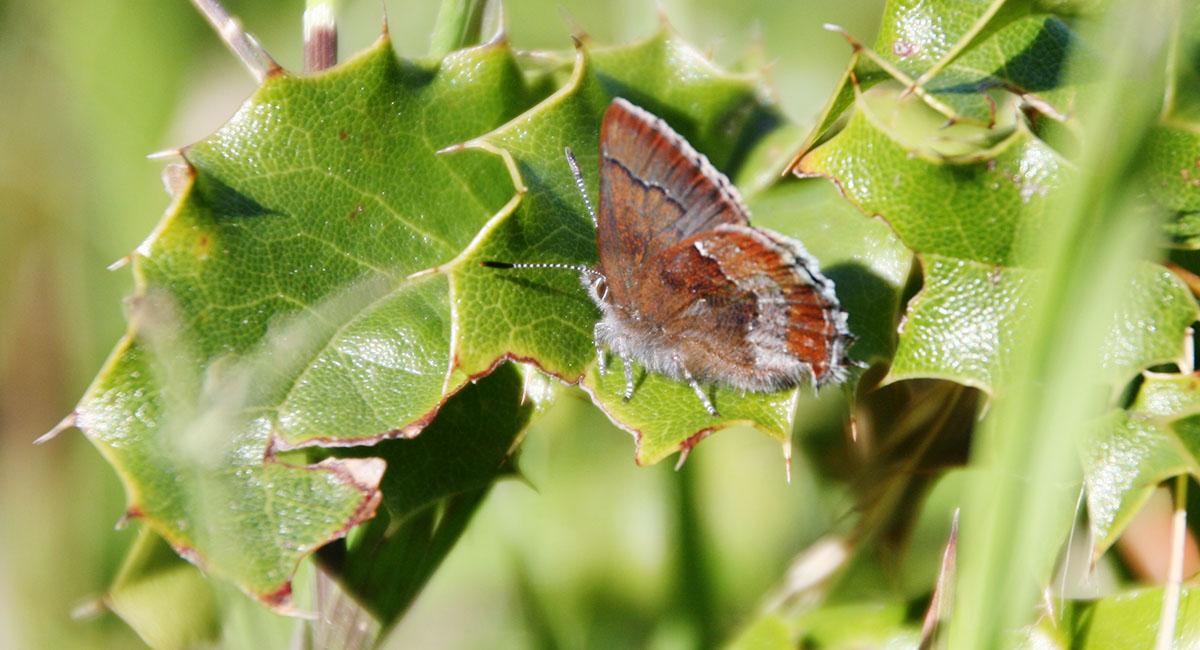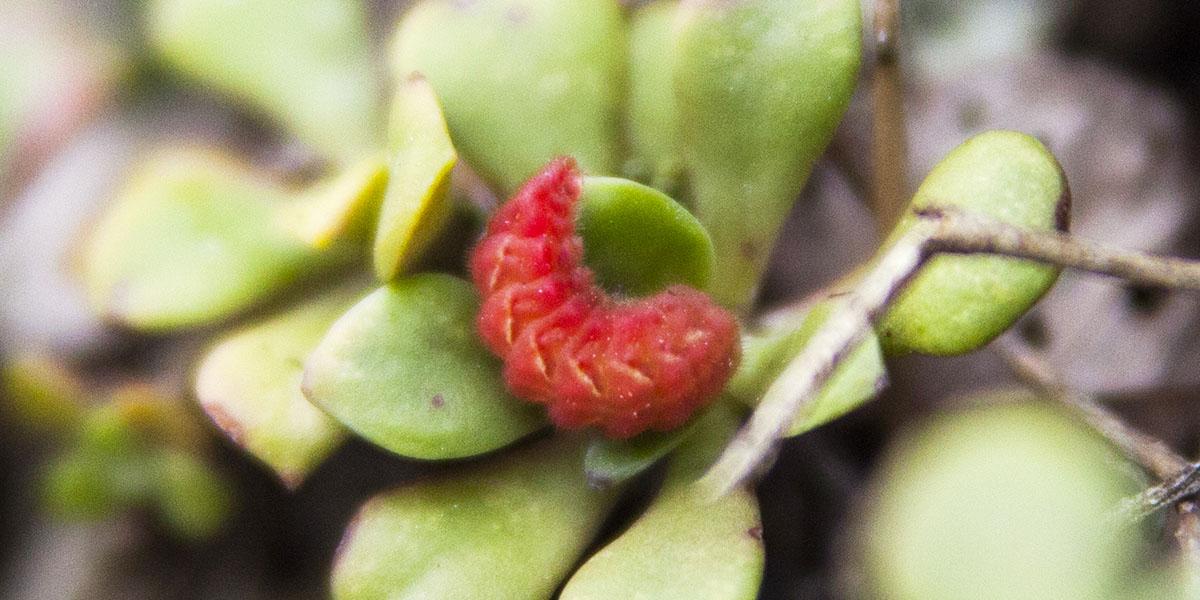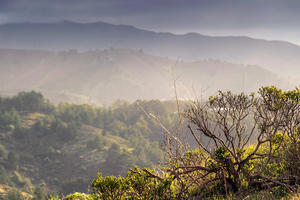
Threatened or Endangered
The San Bruno elfin (Callophrys mossii bayensis) is federally listed as endangered.
Population
The San Bruno Mountain population has been estimated at 1,000 or more adults within 15 subpopulations. Montara Mountain supports about 10 subpopulations, and Milagra Ridge supports about four.
Description
The San Bruno elfin is brown on the upperside, and reddish brown on the underside with a whitish, irregular median line (both sexes). The larvae (caterpillars) are bright red or bright yellow.
Size
Adults are 20 - 24 mm (a bit smaller than the Mission blue). Larvae are very small, but easily spotted due to their bright coloring.
Habitat
The elfin occurs only on north-facing slopes within the fogbelt where its hostplant, broadleaf stonecrop (Sedum spathulifolium) grows. Stonecrop grows in coastal grassland and low scrub on thin, rocky soils.
Range
Remaining populations of San Bruno elfin butterfly are found in only three locations around the San Francisco Bay area in California: Milagra Ridge (San Mateo County), San Bruno Mountain (San Mateo County), and Montara Mountain (San Mateo County). Though elfin distribution has always been scattered and dependent on the distribution of its hostplant, the historical distribution of the species probably included Twin Peaks and Mount Davidson (San Francisco County).
Life Cycle
Females oviposit on the ventral surface of broadleaf stonecrop from February to early April. The red or yellow larvae hatch in 5 to 7 days and feed on the stonecrop leaves in the first and second instar. Third instar larvae begin to feed on the flower heads in May, and continue to do so in the fourth instar. The fourth instar pupates at the base of the hostplant, and the pupa enters a diapause, which lasts through the summer, fall, and early winter. Adults emerge February to early April and live for about a week, mating and laying eggs on the hostplant.

Food Source
Elfin larvae will feed only on the leaves of their hostplant, broadleaf stonecrop. Adults may drink the nectar of early-blooming coastal flowers, especially hog fennel (Lomatium utriculatum), using a long tube called a proboscis that extends from the underside of the head.
Behavior
First and second instar larvae spend most of their time feeding on stonecrop leaves, while the third and fourth instars feed on stonecrop flowers. Larvae are active in all weather conditions. Adults spend their short lives mating, laying eggs, and nectaring. To locate a mate, adult males perch in the vicinity of the host plant, flying out to investigate passing insects. Females spend even less time in flight than males. Adults rarely stray far from the broadleaf stonecrop habitat. On rainy, cool, windy, or foggy days, adults hide out underneath vegetation.
Legal Protection
The San Bruno elfin was added to the Federal Endangered Species List in 1976, and is protected under the Endangered Species Act.
Our Work
The Golden Gate National Parks Conservancy Park Stewardship Program keeps a close eye on San Bruno elfin populations in the parks by counting their caterpillars in a systematic fashion every spring. It has been monitoring caterpillars at Milagra Ridge since 1999, and at Rancho Corral de Tierra since 2012.

